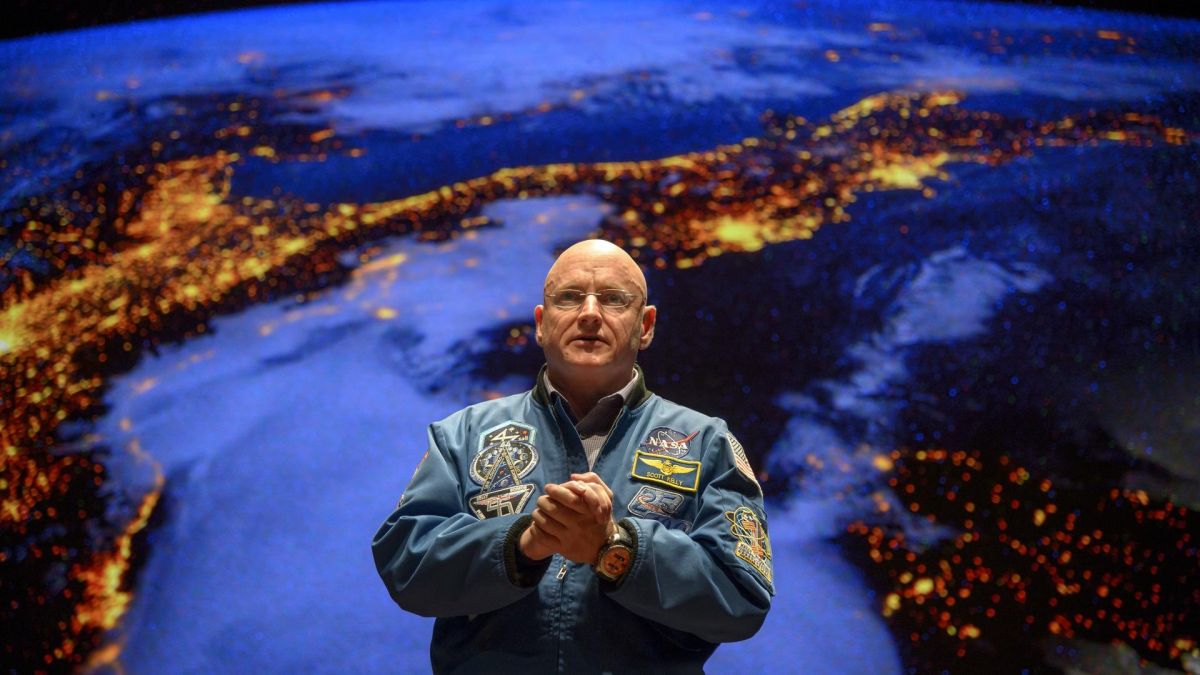
www.space.com
UFOs worth investigating despite lack of 'real evidence,' former astronaut Scott Kelly says
Four-time astronaut Scott Kelly spoke with Space.com about why air and space are so 'prone to optical illusions' that lead to reports of UFOs.
Science & Tech
Former NASA astronaut Scott Kelly is no stranger to the skies.
Kelly, a four-time spaceflyer, one-time space shuttle pilot and three-time International Space Station commander, was a participant in the first public meeting of the NASA study group formed to examine data related to unidentified anomalous phenomena (UAP), a new term for sightings of objects or occurrences in the sky, underwater or in space that can't be immediately explained or identified.
The meeting, held on Wednesday (May 31), saw experts from a wide variety of fields present both analyses of UAP sightings and proposals on how NASA and other government agencies might go about collecting better data to help shine a light on the UAP topic.
At one point in the meeting, after remaining largely silent, Kelly, a former U.S. Navy captain, stood up to share a UAP experience he had while flying an F-14 Tomcat. "I remember one time I was flying in the warning areas off of the Virginia Beach military operating area there," Kelly said. "And my RIO [radar intercept officer] thought — the guy that sits in the back of the Tomcat — was convinced we flew by a UFO. So I didn't see it. We turned around and went to go look at it.
"It turns out it was Bart Simpson, a balloon."
Space.com spoke with Kelly following the meeting to ask more about what the former NASA astronaut and Navy fighter pilot thinks about the current buzz surrounding UFOs/UAP and what sightings might imply about the safety of our skies and the search for intelligent life.
We asked Kelly what he thought about the numerous former pilots, intelligence officers and government advisors who have appeared on cable news programs and series in recent years claiming that the U.S. government is aware of objects or craft that defy conventional wisdom about aerodynamics, propulsion and physics.
"What was it Carl Sagan said, 'extraordinary claims require extraordinary evidence'? You know, they have every right to make extraordinary claims, but without the extraordinary evidence, they're just claims," Kelly said. "In a court of law, eyewitness testimony — I'm not positive on this — but that's considered evidence. In science, it's part of a hypothesis. It's like, 'Oh, we see this!' Let's go investigate it."
Kelly said that the kinds of extraordinary claims associated with some of the reported UAP sightings popularized in the media in recent years, or mentioned at Wednesday's meeting, is largely due to the fact that when flying over water or in space, it can be difficult to gauge objects' speed and size due to the lack of reference points.
"If you see something that you know is an airplane, and you know generally how big airplanes are, you can tell relative distance," Kelly said. "But when you have no reference points, whether it's in space, or flying over the water, it just is really an environment that's really prone to optical illusions." Kelly added that it's not just human eyeballs that are subject to misperceptions, but that many of the sensors aboard fighter jets and other aircraft have the same issues.
Kelly gave an example from when he was flying space shuttles for NASA. During the first few days in orbit, chunks of ice would detach from the shuttle and float nearby. "And oftentimes, like you couldn't even tell what these — because they're all different shapes — you couldn't tell what that ice was and how far away it was. It could be two feet in front of you or, you know, or 50 miles. You don't know because you have no reference. Unless, of course, you knew specifically what something was."
Another example Kelly brought up was a video published in a 2017 New York Times report, titled "GIMBAL," which reportedly showed an encounter between a U.S. Navy F/A-18 Super Hornet fighter jet and an unknown object in U.S. military airspace that appeared to rotate while hovering stationary in the air.
Kelly, however, isn't convinced the video shows anything anomalous at all.
"'GIMBAL,' it looks to me like the FLIR [(forward-looking infrared)] camera is just reaching its gimbal limit," Kelly said. (A gimbal is any kind of mount or support that allows an object, such as a camera, to rotate along an axis or multiple axes.) "And it's because it has gimbal limits. You know, it turns 360 degrees in one direction, or whatever the limits are, and it gets to that stop. It's got to turn back around the other way. Kind of what it looks like to me."
Another video released by the Washington Post in 2018 just months after the New York Times report, known as "GOFAST," reportedly shows a recording taken by an F/A-18's sensors of an object appearing to soar over the ocean at an incredible speed.
























































